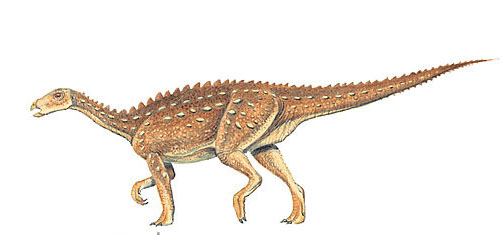Lusitanosaurus (phonetically spelled as Loo-se-tan-o-sore-us) is a Portugal lizard of the species type Liasicus named by Albert-Felix de Lapparent & Georges Zbyszewski in 1957. The classification of this species is as follows: Chordata – Reptilia – Dinosauria – Ornithischia – Thyreophora – Ankylosauria

The size of the Lusitanosaurus is unknown due to the lack of remains. They followed an Herbivorous diet. The known location of this species is Portugal. They existed during the Sinemurian period of the Jurassic. The fossil representation of the Lusitanosaurus includes a single partial left maxilla and an upper jaw bone with seven teeth.
The type species is Lusitanosaurus liasicus. The generic name is derived from Lusitania, the ancient Latin name for the region. The specific name refers to the Lias. Lusitanosaurus is a genus of basal thyreophoran dinosaur from the Early Jurassic of Portugal. The genus was first described by Albert-Félix de Lapparent and Georges Zbyszewski in 1957. The correct geological dating is difficult because the exact location of the find and the date of collection are unknown. From the matrix rock, it can be inferred that it has been discovered near São Pedro de Moel, in strata from the Sinemurian of the Early Jurassic. This would make it the oldest known dinosaur from Portugal. The Lusitanosaurus was originally assigned to the Stegosauria by de Lapparent. Some authors consider it a nomen dubium but today it is considered a basal member of the Thyreophora probably belonging to the Scelidosauridae.
| Name: | Lusitanosaurus (Portugal lizard) |
| Phonetic: | Loo-se-tan-o-sore-us. |
| Fossil representation: | Partial left maxilla and seven teeth. |